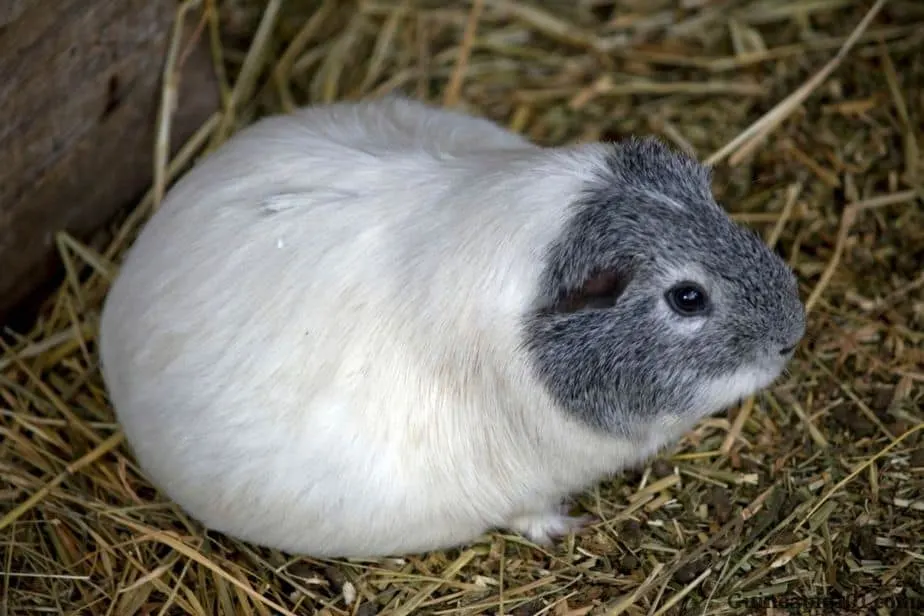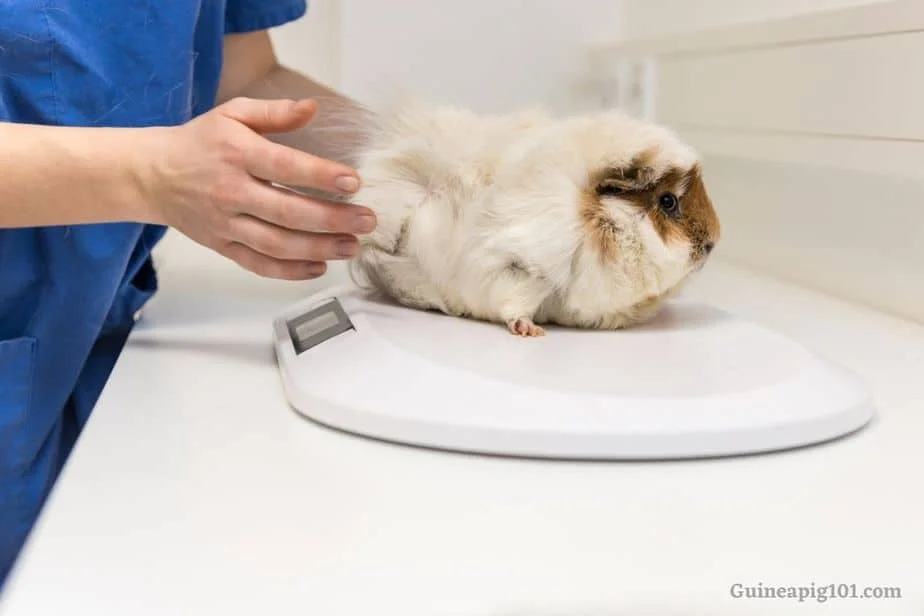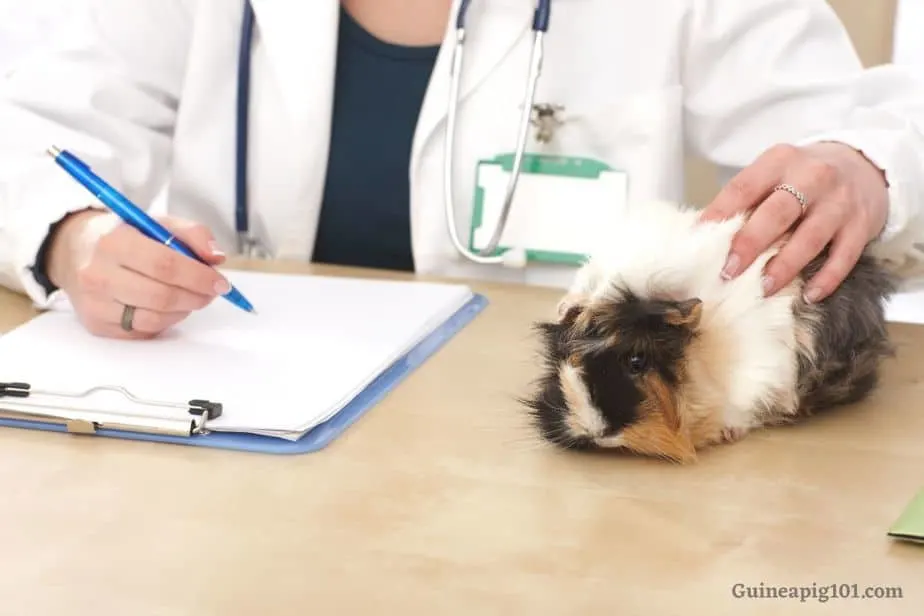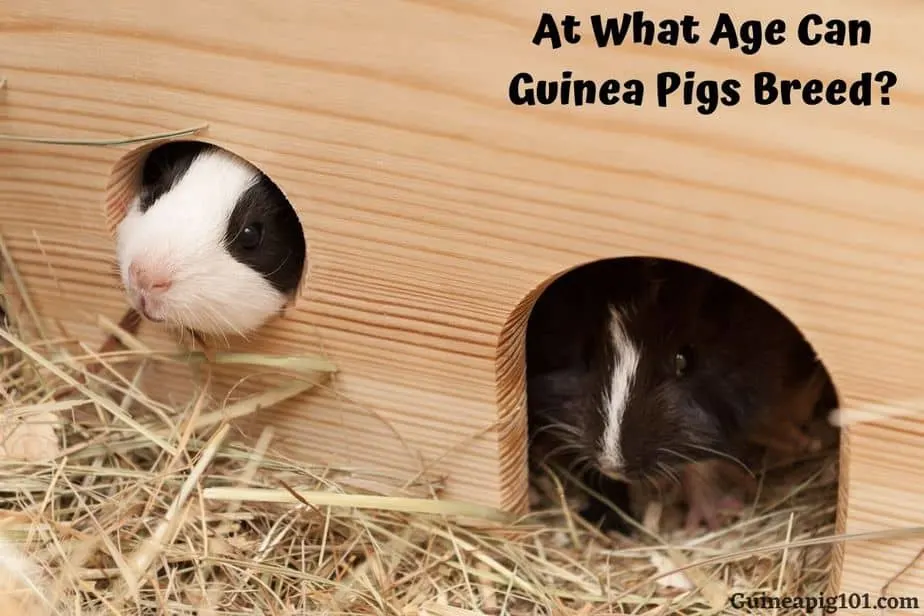Breeding a guinea pig depends upon a lot of factors and age is one of them. If you end up breeding your guinea pigs too early or too late then there can be a lot of complications. So, at what age can guinea pigs breed safely?
I was curious to learn about the same. So, I did thorough research, and here is what I have learned.
Male guinea pigs become sexually mature after 3 months of their age, whereas female guinea pigs become mature within 2 months of their age. However, they both can achieve fertility earlier than the mentioned period.
The pregnancy period in guinea pigs lasts from about 59 to 72 days, and on average 65 days.
But the duration of pregnancy may alter depending on the litter size(the number of babies given birth to at a time.) Baby guinea pigs are called pups.
Therefore, the smaller the litter(one or two pups), the longer is the gestation time. And larger the litter(about 5-6 pups) would mean a shorter pregnancy period. At maximum, a female can give birth to 8 pups in one litter.
What is the best age to breed a female guinea pig?
Male guinea pigs can breed when they are 3 months of their age, while females can breed somewhat at 2 months from their age, whereas some guinea pigs attain sexual maturity early to this period.
It would be best if 3 to 6 months old female guinea pigs(sows) mate with around 3-4 months past male guinea pigs(boars).
A female guinea pig can give birth to up to 5-6 litter per year. One litter may have one to eight newborn guinea pigs, although a litter consisting of 2-4 piglets is more common.
Indeed, females should be bred within 3-8 months of their age.
Delaying further would make their pregnancy complicated due to the fusion of pubic joints, which functions in the newborn’s natural passing out of the mother’s womb.
Though age is not a matter of concern in males for mating.
If a male and female of reproductively developed age have been kept in close space to each other then the chances for your female pet to get pregnant again are higher. Thus, it is crucial to separate the male guinea pigs from the female ones.
Signs of pregnancy in guinea pigs

There are various signs of pregnancy in guinea pigs. Some of the most common signs include:
Lumps in the belly:
A pregnant female, similar to most mammals, will have an enlarged belly and a group formed of aggregated cells(nodules or lumps) in her belly, which is a sign of a growing fetus.
Within a week or two of pregnancy, gently touch the abdomen area of your pet, and you will be able to feel the lumps in her belly, which can be an indication of developing fetus inside the womb.
Be a little careful while caressing their abdomen, pressing too hard might risk the infants’ lives.
However, lumps that might see you as a pregnancy sign could also be a cyst(a health condition). So better not rush, and get your pet checked by a vet for certainty.
However, the nodules will continue to grow until birth only if the sow is pregnant.
Behaviour changes:
With the advancement in pregnancy, a guinea pig may begin to eat and drink more.
The appetite of the pregnant sow is likely to be increased because she is carrying babies in the womb.
Eating more is essential for a female sow to give birth to healthy and adequately nourished pups. Lack of appetite might give birth to malnourished babies.
However, your guinea pig eating more than usual could otherwise be an indication of some underlying health condition if not pregnancy.
Weight changes:

A typical guinea pig weighs about 1.5-2 lbs. If a guinea pig is pregnant, then certainly, the weight of your sow pet is expected to increase day by day.
You may not notice any significant increase in their weight daily.
But to find any noticeable changes, monitor their weight on a weekly period.
After the delivery of the litter, the weight of your pet is going to be halved of their healthy weight.
Fortunately enough, if your pet turns out to be pregnant, then do ride your pet to a vet for medical assistance and advice to avoid any later complications.
Also, seek advice from your vet doctor about the prenatal and postnatal care of your guinea pigs.
Guinea pig labor
When female guinea pigs go into Labour pain and if it takes them longer than 15-20 minutes, then undoubtedly they require medical help and should be given as soon as possible.
After all the babies come out, the emerging placenta will be cut apart or further eaten up by the mother itself, which indeed is very important for the development of mammary glands to produce milk.
The infants will be fragile and furred with eyes completely open. They shouldn’t be touched or held right after their birth.
Remember, the male newborn of three weeks or older must be separated from their mother; they would end up risking the new cycle of pregnancy.
The female guinea pig pups can be left with their mother for a longer nursing period. A period of an extra week is good for them.
Also, make sure you separate the male pups with their female pups as guinea pigs can breed with their siblings as well.
Guinea pig litter

Guinea pigs, on average, give 5-6 litter per year. Litter size varies. One litter may have one to eight pups.
Litter size also depends upon the duration of pregnancy. If the gestation period is more extended than the litter size, it is small(2-3 pups), whereas if the gestation period is lower than the litter size, it would be large(5-7 pups).
Perhaps, the litter of size comprising 2-4 babies is more commonly seen.
The newborn must be nursed for at least 3 weeks after their birth to protect them. Meanwhile, the male pups must be separated from their mother to prevent the new pregnancy cycle’s complexity.
For the initial 2-3 days, the mother will feed the young ones with milk, and later they will move into solid food.
Once the young ones start eating solid food, the sow will teach them to urinate and poop via licking their bottom part very often.
Certainly, the mother guinea will feed her stool to the babies because it is believed to contain certain bacteria, which is considered suitable for the digestive system of the young ones.
False pregnancy in guinea pig
Female Guinea pigs often develop a false belief of them being pregnant, which is quite common in animals.
It is a psychological behavior that makes them believe that they are pregnant when they are not.
Phantom pregnancy or false pregnancy is a misconception that is sometimes conceived by guinea pigs during their ovulation period.
Thus your pet would have elevated hunger, mood swings due to hormonal changes and must be handled with utmost care and generosity.
Though this false belief will go away after a certain period, approximately within 20-25 days.
Why you shouldn’t breed your guinea pigs
Self-induced breeding by the owners may not be as efficient and healthy as the normal one initiated by the guinea pigs themselves.
However, if a female of age more than 10 months is bred for the first time, than the severity of pregnancy increases and thus putting in danger both the mother and the child.
Avoid standard delivery by them if above 10 months and bred for the first time since birth. Better opt for cesarean by a vet to get the pups out.
But unlike other animals, the C section in guinea pigs is very likely to be unsuccessful even when performed by an expert.
Is breeding guinea pigs dangerous?
Surely not, if females are bred during the age of 3-8 months.
Females are more reproductively capable before 8 months of their age and enhance the complexity later than this.
Most of the mammals undergo pubic symphysis, and so does the female guinea pig. It increases the mortality rate either of the mother or the child.
When is a guinea pig too old to breed?
As we know already, age is a matter of concern while breeding guinea pigs.
Females become reproductively active as young as of age 2 months, whereas the males achieve sexuality of age 3 months. It is better to breed a younger female guinea pig then their later counterpart.
Precautionary, the female guinea pig must not be above 10 months of age.
Mating later than this age would result in complications due to the fusion of pubic joints, which allows the smooth passage of the babies through the birth canal and could be life-threatening.
Guinea pig breeding issues
If bred between 3-8 months, there is a relatively good chance of having a pregnancy with very few complications.
However, delaying further might cause various complications, which we already have discussed so far.
If you have not paid enough attention to appetite, kind of stool, the requirement of various vital nutrients needed for pregnancy, then it might result into medical conditions such as low calcium(hypocalcemia), toxemia(poisoning of blood due to the bacterial infection), discharging of body fluids, etc.
These are specific issues that would be faced and need medical assistance.
Why you should spay or neuter your guinea pigs?

Spaying/neutering is a surgical method to remove reproductive organs from a male or a female pig.
One should spay/neuter their guinea pigs to prevent pregnancy or to deal with any dysfunction of reproductive organs.
Though male spaying is more preferable than the female due to ease in surgery.
Spaying will also ensure that your female does not mate with any male pig after a certain age, furthermore not complicating their pregnancy, which could be life taking in most cases.
Apart from preventing pregnancy, it is also done to avoid uterine cancer and lump formation in females’ mammary glands, whereas to prevent testicle infection in males.
On a light note, neutering will also let you keep a population check on these little animals.
Guinea pig breeding principles
Consider the following principles before breeding your guinea pigs:
- Be sure about the age of the female guinea pig before mating. The mother should at least be of 2-8 months of her generation.
- Keep the pregnant mother in a different cage to ensure her well being and safety.
- Check the cage regularly to see the signs of any discharge or bleeding.
- Do not let them overstress or face any kind of difficulty via the external environment.
- Allow them to interact with other female guinea pigs to give them the pleasure of companionship.
- Make available enough food to eat and water to drink during the whole time of pregnancy.
- Feeding a mix of alfalfa-based diet during pregnancy and right after birth could help supplement the calcium need.
- Feed more of hay and less of pellet based diet as it makes the food movement in gut smooth and helps prevent diarrhea as well.
- Comfortable bedding and changing of the same from time to time.
- Avoid holding them from either sideway of the abdomen as it might cause miscarriage.
- Preferably lift them with one hand on the bottom and others on the upside. Do not squeeze too hard.
- Be kind to the mood swings and the other physiological behavior.
- Do visit the vet periodically to know the if’s and but’s of the pregnancy and learn if there is any complication regarding the same.
- In general, the labor will last for 5-15 minutes. In case if it lasts longer than 15-20 mins then do not delay further to reach the vet.
- Avoid interaction of the mother with the other male guinea pigs for weeks after delivery, because getting pregnant again in succession is not healthy for them.
- Leave the mother with her pups alone for the few days undisturbed.
- Also, provide proper bedding and solid food to the mother for nurturing her baby.
- Lastly, remember to separate the male guinea pig from their mother and female siblings two weeks after they are born, to avoid difficulty at the beginning of a new cycle.
- And most importantly, take appropriate care and heed to their needs and demands. Precisely saying, be present for your pet.
Sources: Breeding and Reproduction of Guinea Pigs, Guinea-Pig Uterus During Pregnancy, Food restriction alters pregnancy-associated changes in IGF and IGFBP in the guinea pig, Early pregnancy in guinea pigs, Breeding from your guinea pig
